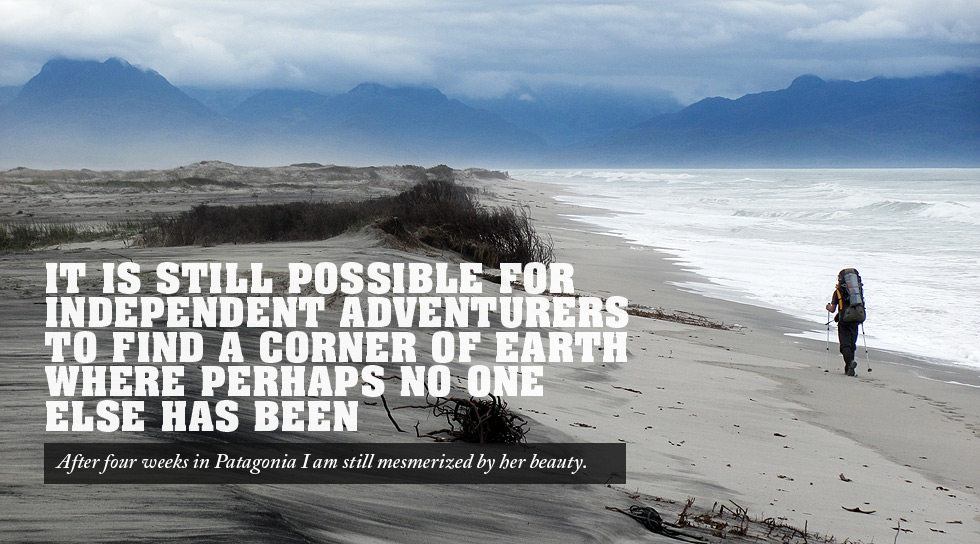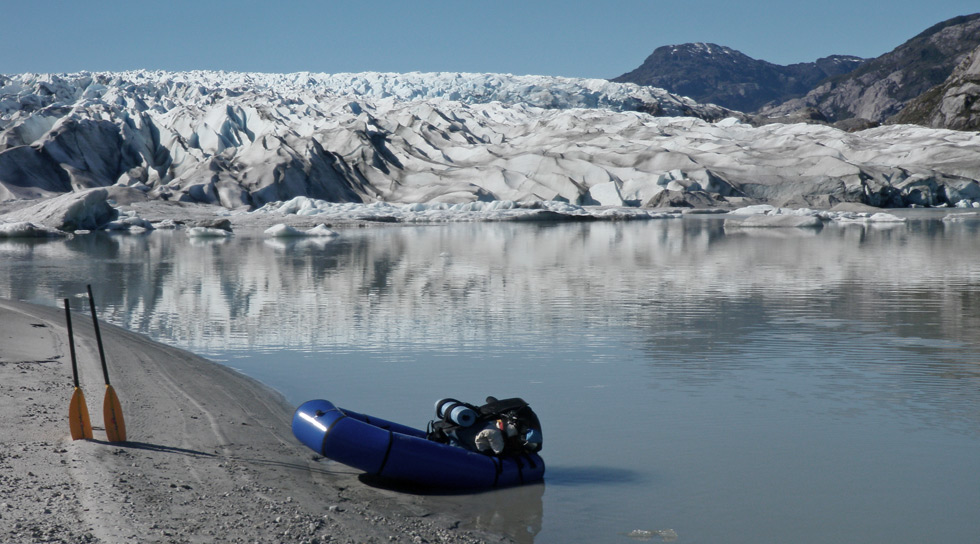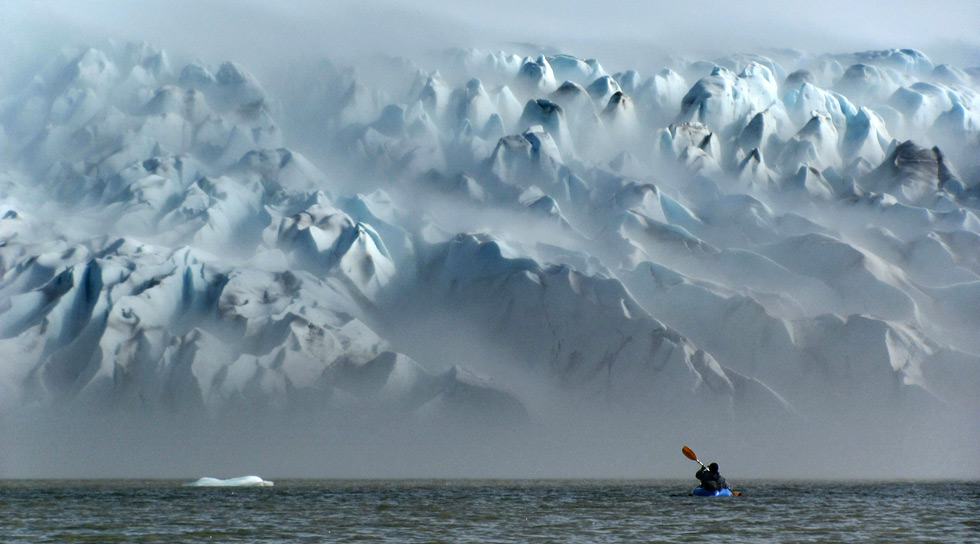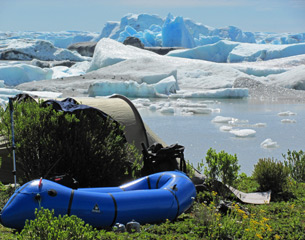Every step takes away the very last piece of my strength. To move a leg I need to scream and squeeze all that is left in me. Nobody is listening anyway. The screams die quickly in the marshes. Our bodies sink deeper into a mixture of brown water, moss, and rotten grass. A couple of vultures circle above us on the last thermals of the day. We are far south and summer days are long at these latitudes, but the night is coming and I know that we will be stuck in these marshes. My GPS says it is only one more kilometer to go. Only? When it takes an hour to walk a hundred meters one kilometer seems like an impossible eternity. We can see the moraine at a distance and I know that our prize is on the other side - I saw it two years ago. But we will be stuck in the marshes for the night. We will not make it today. We set up our tent on a piece of muddy ground, hoping the next storm from the Antarctic will not hit tonight.
We have been in this land for three weeks now. My skin slowly starts to resemble thin paper through which you can see all the taut tendons and muscles fed on the body builder supplements we have been eating. We have not seen any people here. We have not seen any signs of people. There is nobody here to name places and the few names that exist make you think: Expedition Fjord, Explorers Valley, Gulf of Sorrows. I play along and named a lake filled with icebergs and eternal fogs—Disillusion Lake. The name fits.
In 1741 a British Royal Navy sail ship HMS Wager shipwrecked on an island at the entrance to these fjords. Most of the crew survived the running aground but getting back to civilization was the story of their times. After almost a year on the island fighting winter weather, starvation, mutiny and countless fruitless tries to sail out of the island, only a handful of them remained alive. Then, one day, those survivors were met by sea-faring Alacaluf Indians. The Alacalufs, who were sea nomads and lived on their boats, took the survivors on an epic four-month journey through a secret passage on Ofqui isthmus and an infinite maze of fjords in Western Patagonia up to the inhabited island of Chiloe 500 miles north. It was a journey that only a few of the castaways survived including midshipman John Byron who lived to tell the story in his book. The Alacalufs are long gone. The island is called now Wager. In 1973 a new navy expedition came here to explore this truly forgotten corner of our planet. They had the support of the British and Chilean navies, but they did not have what we have—packrafts. And now we are here and we have gone even farther than anyone else before us into uncharted valleys and fjords known only from satellite photos.




















